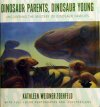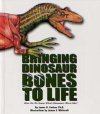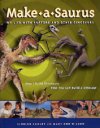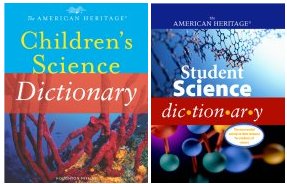Dinosaurs Grow Up Additional Information
Share this:
- Share via email (Opens in new window) Email
- Click to share on Facebook (Opens in new window) Facebook
- Click to share on X (Opens in new window) X
- Click to share on Pinterest (Opens in new window) Pinterest
- Click to share on Reddit (Opens in new window) Reddit
- Share to Google Classroom (Opens in new window) Google Classroom
- Click to print (Opens in new window) Print
Perkins, Sid. 2003. Wings aplenty: Dinosaur species had feathered hind limbs. Science News 163(Jan. 25): 51. Available at http://www.sciencenews.org/20030125/fob1.asp.
You can learn more about dinosaur families at www.enchantedlearning.com/subjects/
dinosaurs/dinoclassification/Families.shtml.
For velociraptors, see www.enchantedlearning.com/subjects/dinosaurs/dinos/Velociraptor.shtml (Enchanted Learning).
Information about the evolution of birds can be found at www.pbs.org/lifeofbirds/evolution/(PBS).
Gregory Erickson has a Web page at www.bio.fsu.edu/faculty-erickson.php.
Dinosaurs and Birds
www.amnh.org/science/specials/dinobird.html
American Museum of Natural History
Dinosaur Growth
www.sciencedaily.com/releases/2001/07/010730081218.htm
Science Daily/Florida State University
Books recommended by SearchIt!Science:
 |
Dinosaur Parents, Dinosaur Young: Uncovering the Mystery of Dinosaur Families — Kathleen Weidner Zoehfeld
Published by Clarion Books/Houghton Mifflin, 2001.
When it comes to parenting, were dinosaurs like other reptiles that abandoned their nests right after laying their eggs? For many years, scientists thought that dinosaurs were lousy parents, but recent discoveries are changing the way scientists think about dinosaurs and their young. This book begins with the story of an Oviraptor nest and the father who protects it from a herd of Protoceratops that are fleeing a sandstorm—at the cost of the dedicated father’s life. Seventy-three million years later, a group of paleontologists found the nest, and deduced what had happened. This book tells about Maiasaura, a species whose name means “good mother lizard”, and several other species who are good parents, and the scientific discoveries that led to the shift in how paleontologists think about dinosaur nesting behavior. |
 |
Bringing Dinosaur Bones to Life: How Do We Know What Dinosaurs Were Like? — James O. Farlow
Published by Franklin Watts/Scholastic, 2001.
How do paleontologists bring dinosaur bones to life? Explore the physical appearance, diet, fighting, and reproduction behaviors of dinosaurs. Examine actual fossils to learn about specific dinosaurs. What is the difference between an educated guess, an ordinary guess, and information that we can be fairly sure about? How can we use evidence to determine what becomes “fact” about dinosaurs? Explore ideas that scientists once considered factual, but now are considered inaccurate. What are current scientific ideas about how the Stegosaurus used the plates on its back? Learn not only what scientists know, but how they know what they know. |
 |
Make-a-Saurus: My Life with Raptors and Other Dinosaurs — Brian Cooley, Mary Ann Wilson
Published by Annick Press, 2000.
Brian Cooley makes models of dinosaurs for museums. Learn how he re-creates these creatures using one of the most important tools—his imagination! Follow him as he constructs dinosaurs from welding equipment and plaster. Step-by-step photographs bring the dinosaur model to life—right before your eyes. Build your own dinosaur at home using tools and materials that you can easily find. Unlock your own imagination, and learn how museum artists create sculptures, including the feathered model illustrated in this book. |
Power Words
femur The long bone of the thigh.
sauropod One of two types of saurischian dinosaurs, widespread during the Jurassic and Cretaceous Periods. Sauropods were plant-eaters and often grew to tremendous size, having a stout body with thick legs, long slender necks with a small head, and long tails. Sauropods included the apatosaurus (brontosaurus) and brachiosaurus.
velociraptor A small, fast dinosaur that ate meat and grew to about 6 feet (2 meters) long. It had long, curved claws, walked on two legs, and was good at leaping.
Copyright © 2002, 2003 Houghton-Mifflin Company. All rights reserved. Used with permission.
